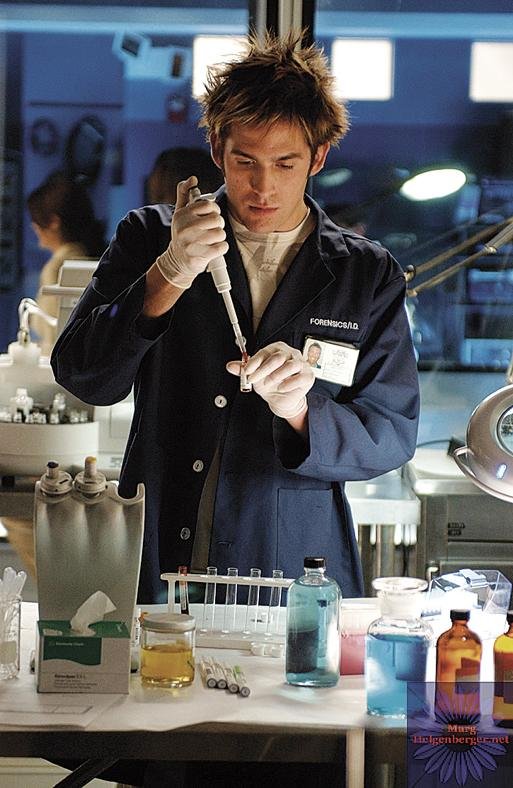To what extent are DNA tests reliable?

A woman denounces a rape. The police investigate what happened and arrest a suspect. All evidence indicates that the rapist is suspicious. However, the DNA analysis places the investigation in a new direction: analyzing the DNA extracted from the oral cells of the suspect and the semen sample collected in the victim's body, it is observed that only 7 of the 13 markers analyzed are compatible. Thus begins the chapter "Bloodlines" of the series CSI (2004). Throughout the chapter it is shown that the rapist has been accused and that the disagreement of genetic analysis is due to a genetic problem of the suspect. This genetic disorder, called chimerism, makes the organism have cell lines of different genetic information.
Chimerism is not fiction, it exists in real life and, although we do not know how often it appears, it is believed to be rare. The individual chimeras can be formed for different reasons, one of them related to twin pregnancies: if two eggs created simultaneously fertilize with sperm sends, the twin results vary, but if in the first stages of embryonic development the cells of both fertilizations join, the result will be a chemical individual. This strange condition has been shown in a few real cases (about 30) and always in special circumstances.
However, the presence of cells with different genetic information in pluricellular organisms is not exclusive to chemism. There is another phenomenon in which cells present specific genetic differences: mosaic. This condition is due to the presence of genetic variants in some of the millions of somatic cells of pluricellular organisms. One of the causes is novo mutation in an embryonic cell. These mutations are not transmitted to the next generation (this would occur only if they were germ cells), but could be extended to derived cells. Hypothetically, if the mutation occurs at the beginning of embryo development, a significant proportion of the adult individual cells could undergo mutation, while the rest of the cells would have original information. As cell division processes occur throughout development on millions of occasions, genetic mosaic is common. It is said that all human beings have some degree of mosaic. Recent studies in which heterogeneity in the genome of the neurons of an individual or in the sequence of the mitochondrial genome of the different tissues of an individual have shown that this condition is very common.
Returning to the forensic field, can chimerism and mosaic cause problems when interpreting the DNA tests?
In forensic medicine, DNA tests are used in many fields, but are mainly used to determine maternity and/or paternity relationships and to identify evidence of criminal action or catastrophe. In these cases, DNA tests are used to compare the genetic profiles of the different biological samples. A genetic profile indicates the combination of alleles in genetic markers that are analyzed in a biological sample. Normally few markers (about 13) are analyzed but very polymorphic from one individual to another. This is enough for forensic cases, since it is based on two considerations: the first indicates that each person has a unique genetic profile and the second, that each genetic profile is unique, except for the same or monocygothic twins, who share the same genetic information. Chimerism and mosaic question the first affirmation and mosaic the second, so it can be a problem to solve certain forensic cases.
Mosaic can be detected if in different samples of the same person discordance appears in some DNA marker but not in the rest. However, in some situations, such as cancer, genetic differences between the cells of the same individual increase, which can lead to an erroneous interpretation of genetic profiles. We know that in cancer processes there is a genetic instability that can alter the genotype of 68% of STR markers (markers commonly used in forensic activity). Therefore, knowing if an individual involved in forensic research is suffering from some cancer process can be important for interpreting discordant genetic profiles, as it may be due to mosaic.
Chimerism is a more complex condition, more difficult to detect and which affects more the errors that can be made during the interpretation of the DNA analysis. Examples of this are some situations of chimerism in which individuals simultaneously have cells with genetic factors typical of the female sex and others of the male sex. In these cases, DNA analyses to determine sex usually give erroneous or ambiguous results. Being rare outbreaks (at least that is believed), it can be thought that its impact on forensic activity is minimal. And perhaps that is the case, and few suspected chemists have escaped a charge due to disagreements between the genetic profile of their oral cells and the biological remains of a criminal action. However, it should be known that more and more common activities such as bone marrow transplantation or in vitro fertilisation increase the likelihood of suffering a chemist.
In the coming years, forensic identification systems may use more sensitive and accurate techniques for DNA analysis. And we may know how often chimerism really appears in humans and that we have effective detection procedures. However, while we do not reach this point, the specific differences that occur as a result of the mosaic are being used to differentiate the genetic profiles of monocygothic twins, a priori equal. This example illustrates how scientific knowledge helps the problematic situation present an opportunity for new applications.
Buletina
Bidali zure helbide elektronikoa eta jaso asteroko buletina zure sarrera-ontzian











